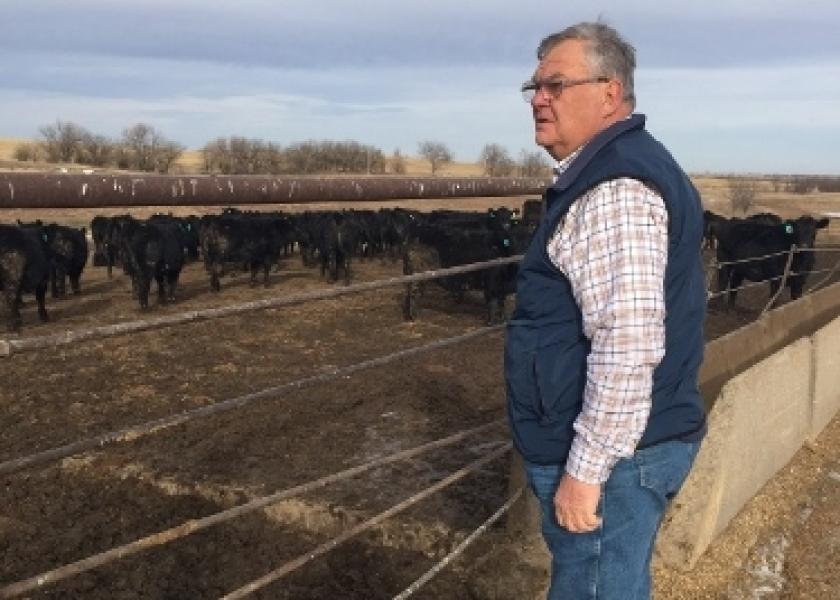Commentary: Are We Willing to Change?

“An EU ban on the use of antibiotics as growth promoters in animal feed enters into effect on January 1, 2006. The last four antibiotics to help fatten livestock will no longer be allowed to be marketed or be used from this date. The ban is the final step in phasing out of antibiotics used for non-medicinal purposes. It is part of the Commission’s overall strategy to tackle the emergence of bacteria and other microbes resistant to antibiotics, due to their overexploitation or misuse.” Markos Kyptianou – Commissioner for Health and Consumer Protection European Union
This ban of antibiotic use in animal production for anything other than treating a disease has been in effect for almost 14 years. I bring it up now because of the pending trade agreement between the US and the EU which would give the US 50% of the EU’s imported beef. That’s an amount roughly equivalent to our current “Natural Beef” production. This has the potential to be a huge economic boost to every sector of the US beef production chain, but raises some interesting questions.
The first and possibly most important issue is the source of feeder cattle that have not received a medicated mineral or been implanted as implants were banned prior to the above final ban on feed grade antibiotics. This sounds simple enough but without a well-designed, implemented and managed cow-calf health and nutrition program we will not be able to provide the quota granted to us. The crux of the matter is every cow-calf operator needs a veterinarian that is willing to take a “holistic” approach with their clientele and a nutritionist who will do likewise.
What do I mean by “holistic”? In this context, I intend to promote a concept of involvement beyond product sales. Scheduled visits focused on the whole operation, planning and training meetings are good starts but this could and should include such things as pairing feeders with cow-calf operations, managing records, providing performance and health feedback, being a liaison between the entities.
We can make this scenario worthwhile, enjoyable and profitable for all concerned if we communicate.
Whether we agree with this ban or not is irrelevant at this point as the EU and an ever increasing number of U.S. consumers continue to tell us that this is what they want.
Buggy whips were once a thriving business but ignoring a changing world ended that. It would also appear that our Land Grant universities are getting the message as evidenced by the most recent graduate student poster competitions at the Plains Nutrition Conference. The last two years have had only three studies out of more than 70 that revolved around a drug.
Thanks to Dr. Kenneth Eng for birthing and financially supporting this endeavor for the past several years. A great idea given life.
Both the health and nutrition communities need to take long hard looks at things like yeast, DFM’s, yucca, chelated trace minerals, vitamin sources and levels and things like pH modifiers to keep acidosis and bloat in check. Innovative ideas like designer mineral programs to ward off pinkeye and foot rot have merit. Using a foot rot vaccine properly by following the label and administering it twice remains critical. It’s also quite effective as a treatment.
Become more involved with your clients in areas like facility design, equipment purchases and environmental stress management. The last year and a half have taught those of us who practice north of I-70 the value of adequate pen space and maintenance, bedding, shade, windbreaks, drainage, etc. Are we focusing on preparation and planning?
I don’t know a diplomatic way to say this but brand loyalties based on rebates, trips or other perks which can and often do shortchange our clients have to go away. Look, listen and learn about new ways of doing things without a brown bottle and a syringe or a “one supplement or mineral will work for everyone” attitude, or you may find yourself on the outside looking in. Observe, listen, think, innovate, and learn new ways to develop your craft beyond ordinary accepted practices.
We’re all part of a contracting industry from ranches to feedlots to manufacturers and we need to learn and innovate to survive and be relevant. Do a serious self-assessment of not only what you do but the how and why.
An example of listening and trying different things would be fly control. The past two summers we’ve fed a garlic extract that is very effective against biting flies, ticks and lice, and is mixed in the supplement or mineral at a cost of about $.01 a day. We calculate it’s cheaper, more efficient and effective than tags, spraying, back oilers or what have you.
Those of us feeding “natural” cattle have learned how to get all but about 5 to 6% of the performance back. Implants we can’t fully replace at this point, but we continue to look, listen and innovate.
Even though the EU program will allow us to treat morbid cattle with therapeutic scripted antibiotics without them losing eligibility for export, we should always be minimizing morbid cattle by every means possible.
The bottom line is we don’t know what we don’t know, so keep learning.
For more from Dave McClellan, see these articles on BovineVetOnline:







